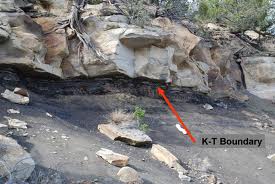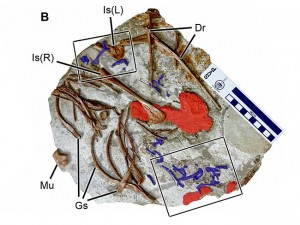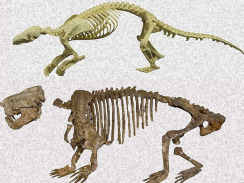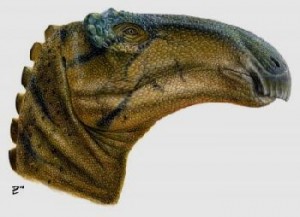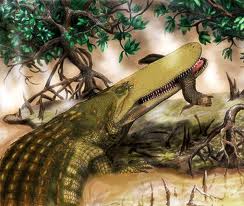An enormous prehistoric bird, which might have resembled a very big ostrich, lived alongside dinosaurs around 83 million years ago, according to new research.
The bird, called Samrukia nessovi after the mythical Kazakh Phoenix, lived in what is now Kazakhstan. It is described in the latest Royal Society Biology Letters.
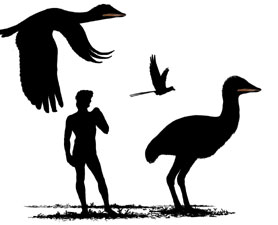
ancient birds
The discovery confirms “that big birds were living alongside Cretaceous non-avian dinosaurs,” lead author Darren Naish said. “In fact, these big birds fit into the idea that the Cretaceous wasn’t ‘a non-avian dinosaurs-only theme park.’ Sure, non-avian dinosaurs were important and big in ecological terms, but there was at least some space for other land animals.”
Naish is an honorary research associate in the School of Earth & Environmental Sciences at the University of Portsmouth. He and his team made the discovery after analyzing the fossil for Samrukia, which previously had been modified by someone to resemble an oviraptorosaur (a type of feathered dinosaur).
All that’s left of this big bird is its toothless lower jaw. The structure and characteristics of the jaw are associated with birds and not non-avian dinosaurs, the researchers believe.
They conclude that the skull of the bird during its lifetime would have been about a foot long. If flightless, it could have stood close to 10 feet tall. If it flew, its wingspan is likely to have exceeded 13 feet.
The big bird is now the second known large avian from the dinosaur era. The first to be identified wasGargantuavis philoinos, which lived in southern France around 70 million years ago. It too may have been flightless and ostrich-like.
“So we can now be really confident that Mesozoic terrestrial birds weren’t all thrush-sized or crow-sized animals,” Naish said. “Giant size definitely evolved in these animals, and giant forms were living in at least two distinct regions. This fits into a larger, emerging picture: Mesozoic birds were ecologically diverse, with lots of overlap between them and modern groups.”
During its day, Samrukia existed in an ecosystem that included armored dinosaurs, duckbilled dinosaurs, and tyrannosaurs — along with other predatory dinos. Smaller birds are also known from this site, called the Bostobynskaya Formation. Sharks, turtles and salamanders from the bird’s time period have also been found in the region.
At present, the site is dry and hot. It’s dominated by semi-desert or scrub. Back in the dinosaur era, it was more of a floodplain environment, with a flat plain crisscrossed by big, meandering rivers. Fossil wood suggests forests were nearby.
It remains unclear what the big bird hunted, but the researchers could not find any evidence for obvious specialization, such as dedication to plant consumption or aquatic prey. They therefore suspect it was a generalist, per many modern birds today.
The bird probably also spent a lot of time running or flying away from the numerous meat-eating dinosaurs from the area.
Such distinctions were obviously important to the animals at the time, but paleontologists now must tease apart birds from non-avian dinosaurs. In the case of this latest discovery, a fossil attributed to a dinosaur was determined to be a bird. Recently, however, the supposed “world’s oldest known bird,” Archaeopteryx, was found to be a non-avian dinosaur. Naish and his team agree with that assessment.
Lawrence Witmer, a professor of anatomy and paleontology at Ohio University, told Discovery News, “We scientists use the cumbersome and seemingly pedantic ‘non-avian dinosaurs’ (term), but back about 150 million years ago, all these groups were extremely similar. They all kind of looked like feathered dino-birds.”
As Naish points out, though, the new findings about Samrukia demonstrate that modern birds “weren’t as distinct from extinct groups of Mesozoic birds as people used to think.”
Admiring today’s birds therefore provides a hint about what avian diversity looked like millions of years ago, when non-avian dinosaurs were still alive and may have been feasting on these early birds.



 September 1st, 2012
September 1st, 2012  riffin
riffin 